Mount Everest is located on the border of Nepal and Tibet and is the world’s tallest peak. Throughout the last seven decades, 6,000 people have scaled Everest more than 12,000 times! These of course are information that you probably already know. So to spice things, we have collected the best fun facts about Mount Everest for you!
1. Mount Everest is NOT the tallest Mountain in the World!
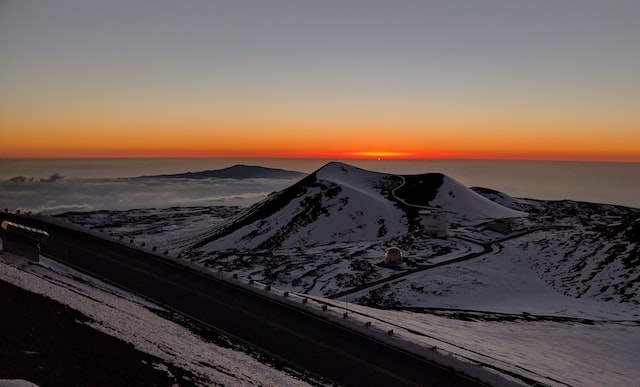
With the battle for the tallest mountain record, there are two main competitors: Mauna Kea vs Mount Everest!
The record for the tallest Mountain actually belongs to Hawaii’s Mauna Kea at 10,210m (33,500 ft) from base to peak. Everest, at 8848.86 meters, is the highest point above sea level. However, Mount Everest still holds the coveted position of being the tallest Mountain in the World.
Compared to Mount Everest, the summit is over 6,800 feet (2,072 meters) further from the planet’s center. Additionally, Mauna Kea is a dormant volcano and is likely to erupt again in the future. However, Mount Everest is the tallest mountain in the world and not a volcano.
Moreover, Mount Everest is also not the furthest location from the planet’s center. That record belongs to Mount Chimborazo in Ecuador, South America!
2. Everest was first discovered and measured in 1852!

Everest was discovered in 1852, during the British government’s charting of India. Subsequently, the first measurement took place by Radhanath Sirdar, an Indian mathematician. He used trigonometry to calculate the horizontal and vertical angles of Everest’s summit to compare it to other mountaintops whose locations and elevations were already known.
According to his calculation in 1852, the Mountain was 29,002 feet (8,839.8 meters) high. Although mountain measurement technology has progressed since the 1850s, his estimate was remarkably precise. Just nine meters below the most recent official height.
Mt. Everest fun fact: Everest grows by 4 millimeters (0.2″) annually, or 40 centimeters (16 inches) on average. Due to the continuous uplifting of the Eurasian Plate by the Indian Plate!
3. Mount Everest is also called Chomolungma, Qomolangma or Sagarmatha
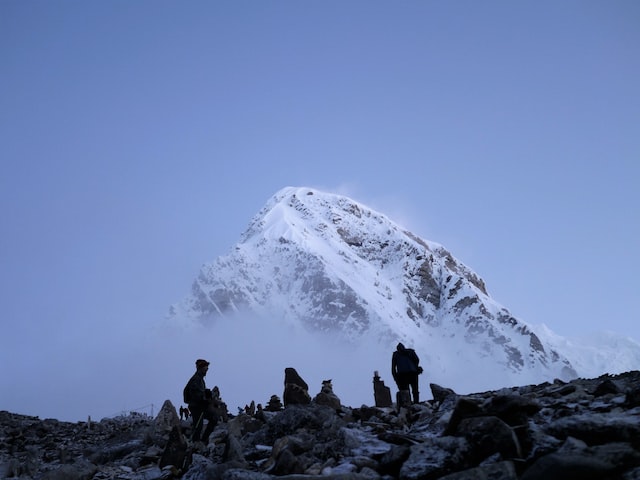
Chomolungma or Qomolangma, which means “mother of the earth,” is the Tibetan name of Mount Everest. And its Nepali name, Sagarmatha, translates to “God of the Sky.” So how did Everest get its name?
Sir George Everest, the British surveyor general made the initial discovery of Everest in 1841 while part of the royal geographical society, and dubbed it “Peak 15”. But in 1865, in honor of Sir George Everest, the Mountain’s name was changed to Everest thanks to his predecessor, Andrew Waugh. Then, the name Everest became renowned all over the World.
Everest Fun fact: Other regional names for Mount Everest have been given, including Third Pole, Peak XV, and Deudhunga for the local sherpas.
4. Jumping spiders are the Permanent Residents of Mt. Everest
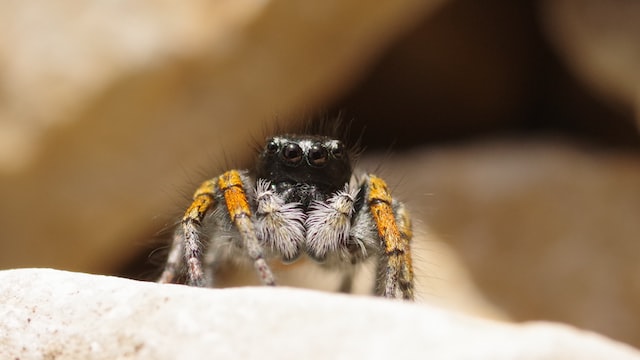
Did you know that jumping spiders (Euophrys omnisuperstes) are the only insects that permanently live on Mount Everest? They are the highest permanent dwellers on the Earth that, live at 6,700 meters (22,000 ft). Jumping spiders live in the cracks and fissures on the slopes of Mount Everest.
There are many different animals on Mount Everest. Some of the well known ones include the Himalayan tahr (a goat-like species), snow leopard, and Himalayan yak can be found below the altitude of 6,000 meters. Aside from the mythology surrounding Yeti, jumping spiders are the only living species permanently established on Mount Everest at 22,000 feet.
5. Mount Everest is around 50-60 million years old

In 1924, explorer Noel Odell was the first to uncover marine fossils on Mount Everest, establishing that an ocean covered the Mount Everest area. It was discovered that the limestone and sandstone on the peak are submerged sedimentary rocks produced around 450 million years ago.
But according to scientists, Everest has only existed as a mountain for the past 60 million years, or since the Eurasian Plate began subducting the Indian Plate, creating the Himalayas.
However, according to scientists, Everest is a 50–60 million-year-old youngster. Mount Everest was created when the Indian and Eurasian tectonic plates met, creating an upward thrust that propelled the rocks skyward. Even till today, that force is still at work, raising the summit of Everest by nearly a quarter inch per year.
Bonus Mount Everest fun fact: It’s assumed that Mount Everest is expanding more quickly than it did in the past. If that is true, Everest would grow 8,848 meters at the current rate of 4 mm/year in just under 2 million years!
6. Everest has been summited over 9,000 times

There have been more than 6,000 different people who have stood on the top of Everest over 12,000 times! Sir Edmund Hillary from New Zealand and Tenzing Norgay, a Sherpa from Nepal, was the first to climb Mount Everest on May 29, 1953. Since then, many people have climbed Everest and tried to break records. Read more about just how many people have climbed Mount Everest!
However, Kami Rita Sherpa holds possibly the most prestigious record. He has reached the summit an impressive 28 times. He reached the summit for the 28th time on May 23, 2023, making history for climbing Mount Everest the most. His fame doesn’t stop there; he has another record for the most eight-thousanders climbed!
On the other side, Everest has had over 300 people die on the Mountain, with 200 dead bodies still scattered on the mountain sides. With a high death rate, Everest is the 6th deadliest Mountain in the world to climb. One of the worst disasters to happen on Everest occurred in 1996. The 1996 Everest Disaster took the lives of eight climbers, including Rob hall of Adventure Consultants and the famous Scott Fischer.
A section of the Mountain is so deadly that climbers have given the Everest Graveyard a grim but light-hearted nickname: The Rainbow Valley. The section above 8,000 meters and under Everest’s northern ridge is known as Rainbow Valley, as it has over 200 dead bodies, all wearing their brightly colored mountaineering suits.
7. 8,000 kgs of human poop is frozen on Mount Everest
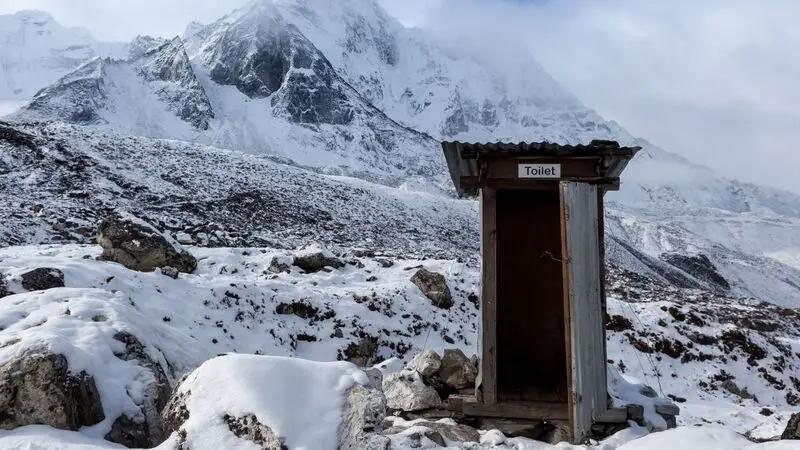
This Everest fact may disgust you, but going to the bathroom on the highest peak in the world, is a big issue. The extreme weather on the mountain means digging latrines is impractical and going outside means you’ll have a higher risk of frostbite and hypothermia.
So where do all the climbers go? Well, they go in their tents and use pee bottles and waste bags for their feces. But what about the feces and pee after?
The climbers are supposed to carry their human waste off the mountain. However, this does not always happen, and has resulted in 8,000 kg of feces being left on Mt. Everest every year. This has led to an environmental issue as the feces does not decompose in the high altitudes.
8. There is a “2 o’clock rule” when climbing Mount Everest
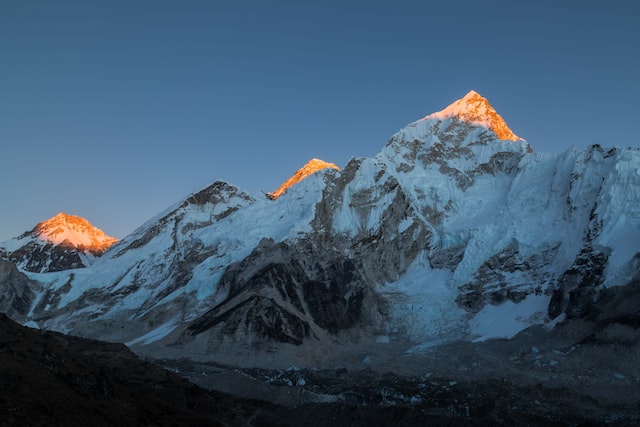
There is a turn-back time on Everest summit day, which is no later than 2 or 3 pm. The main reason is that oxygen is normally calculated for a specific turnaround time, and if they descent late, climbers risk the chance of running out of oxygen.
Another reason for the 2 o’clock rule is that it is extremely difficult to descend in darkness than to ascend. For one, climbers have more energy, generate more heat, and have more oxygen in their tanks and hot water in their bottles while going up. However, on the way down, they’ve expended most of their energy, willpower, and oxygen.
If you leave at midnight and have not summited by nightfall, that means you have been in the death zone for approximately 18 hours and have not even started to descend yet! “Speed is safety” on high altitude mountains. Few people survive the death zone longer than 24 hours. In fact, your body is actively dying every minute you are in the death zone.
9. It takes ten weeks to climb Mount Everest
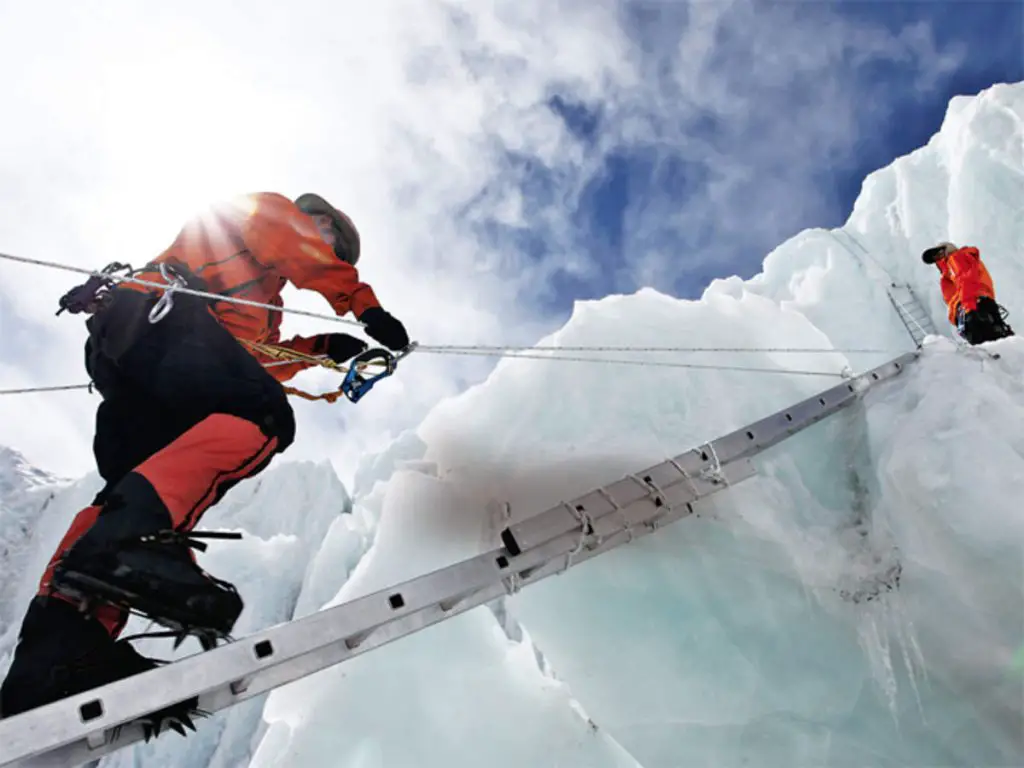
The actual ascent takes only a few days from the lowest base camp to the top, but you also have to descend. Acclimatization and waiting for favorable conditions to break camp and go on take up the majority of an expedition’s normal two-month duration.
It can take 10–14 days to hike to Everest Base Camp, which is not included in this time frame. Because there is just a third as much oxygen available at the peak as at sea level, ascending Everest takes a lengthy time to allow the body to adapt to the tremendous altitude. Most often, climbers utilize bottled oxygen to assist them in coping with the symptoms of high altitude.
Bonus Fun Fact about Mt. Everest: Want to know how long it takes to climb Everest? Well it depends who you are. Lakpa Gelu Sherpa set a record for the quickest ascent of Everest in 2003, scaling the mountain’s south side from Base Camp to the summit in 10 hours and 56 minutes.
10. Only one helicopter has ever landed on Everest’s Summit
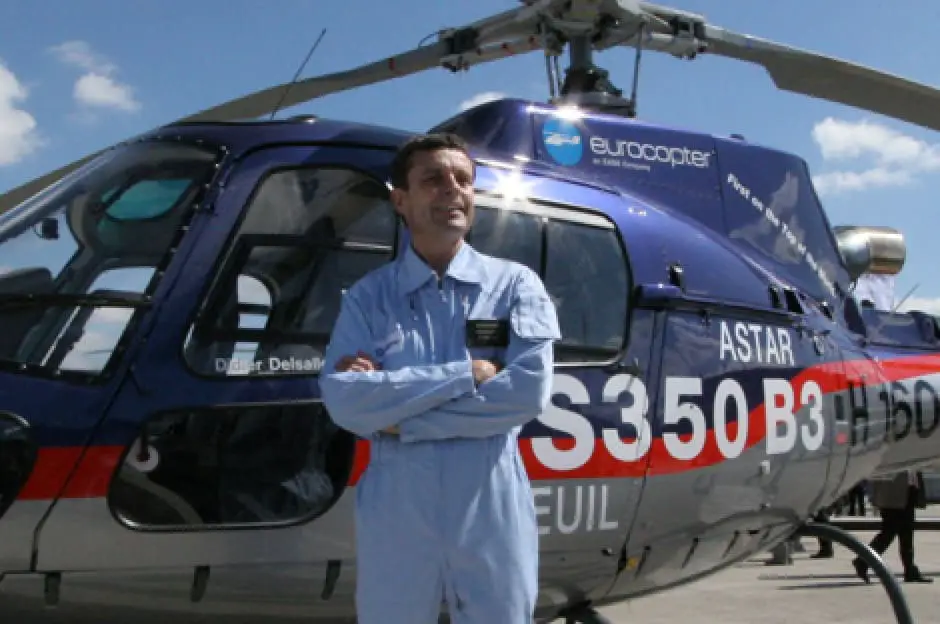
Didier Delsalle’s Eurocopter AS350 Squirrel touched down on Mount Everest on May 14, 2005, and broke the previous record for the highest helicopter landing altitude.
Extra components like passenger seats were removed to reduce the weight of his aircraft by 265 lb and increase the fuel range by one hour. Delsalle used a modified Eurocopter to land on the summit of Everest.
To complete the flight, Delsalle had to locate regions with both downdrafts and updrafts, stating: “I found an updraft so strong that I could rise with almost no power.” After spending 3 minutes and 50 seconds perched atop the World, Delsalle took off and descended to the Tenzing-Hillary Airport in Lukla, Nepal.
11. How much does it cost to climb Everest?

It costs between $40,000 and $85,000 to climb Everest. Additionally, a completely customized excursion, can cost more than $100,000. However, prices can vary depending on the day, the Sherpas, the meal, the mode of transportation, the standard, and the additional oxygen.
Personal gear and other equipment are extra expenses while climbing Everest as well. Finally, to climb the south face of Everest, each climber must pay $11,000 as a licensing fee to the Nepali government.
Because of this, climbing Everest can also be financially challenging. Spending money on transportation, supplies, equipment, and oxygen is necessary. The Sherpas on your team must also be paid, costing around 4,000 USD. As well as cough up some extra money to cover their equipment, food, and oxygen tanks!
12. Oxygen bottles are often stolen on Mount Everest
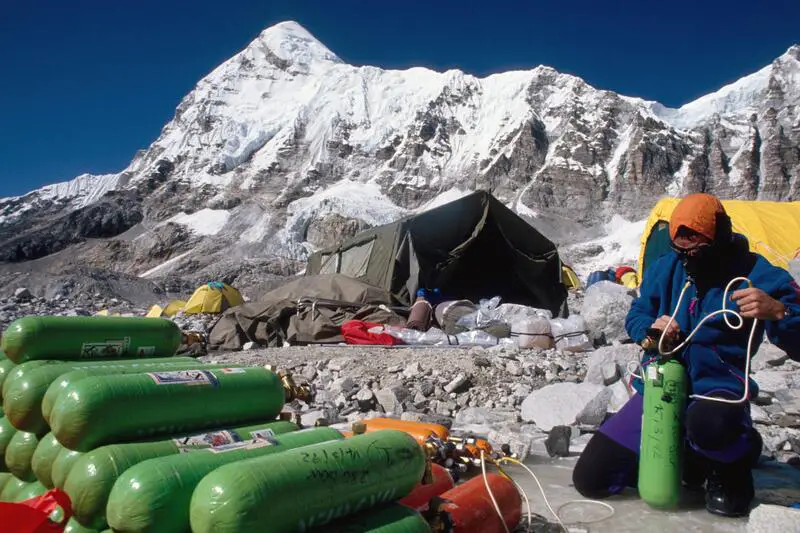
Another interesting fact about Mt. Everest is the issue of oxygen bottles being stollen. Mountaineers normally use bottled oxygen above camp Three and, on average, use seven bottles of oxygen to climb up and down Everest.
Climbers and expedition teams heavily rely on supplemental oxygen to survive. The bottles help fight off high altitude sickness because of the extreme altitudes on the world’s highest mountain. The allure of Everest’s lucrative business around guiding expeditions have attracted individuals willing to take advantage of the situation. The theft not only jeopardizes the safety of climbers but also contributes to environmental degradation as abandoned bottles accumulate on the mountain’s slopes.
Another explanation for the stolen cylinders of O2 is that in case of emergencies, some climbers are forced to ‘borrow’ the tanks from other expeditions.
FAQs: Mount Everest Facts
Below are the most frequently asked Mt. Everest facts questions!
At 8,848.86 meters, it is the tallest peak in the world. In 1841, Sir George Everest discovered Mount Everest. Initially, it was dubbed “Peak 15” by George Everest and was known by that name. But in 1865, in honor of Sir George Everest, the Mountain’s name was changed to Everest.
Everest was formed by the Indian and Eurasian tectonic plates colliding. Creating Mount Everest, which now stands at the border between Tibet and Nepal.
In 1865, it was known as Peak XV by the British and later it was officially renamed Everest.
Bodies have not been removed and has over 200 dead bodies frozen on Everest. The area is also known as the “Rainbow Valley”, as dead bodies lay there in their brightly colored mountaineering suits.
